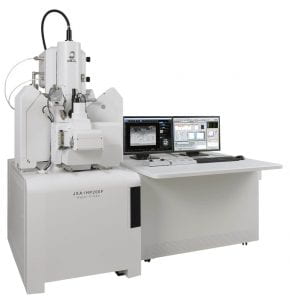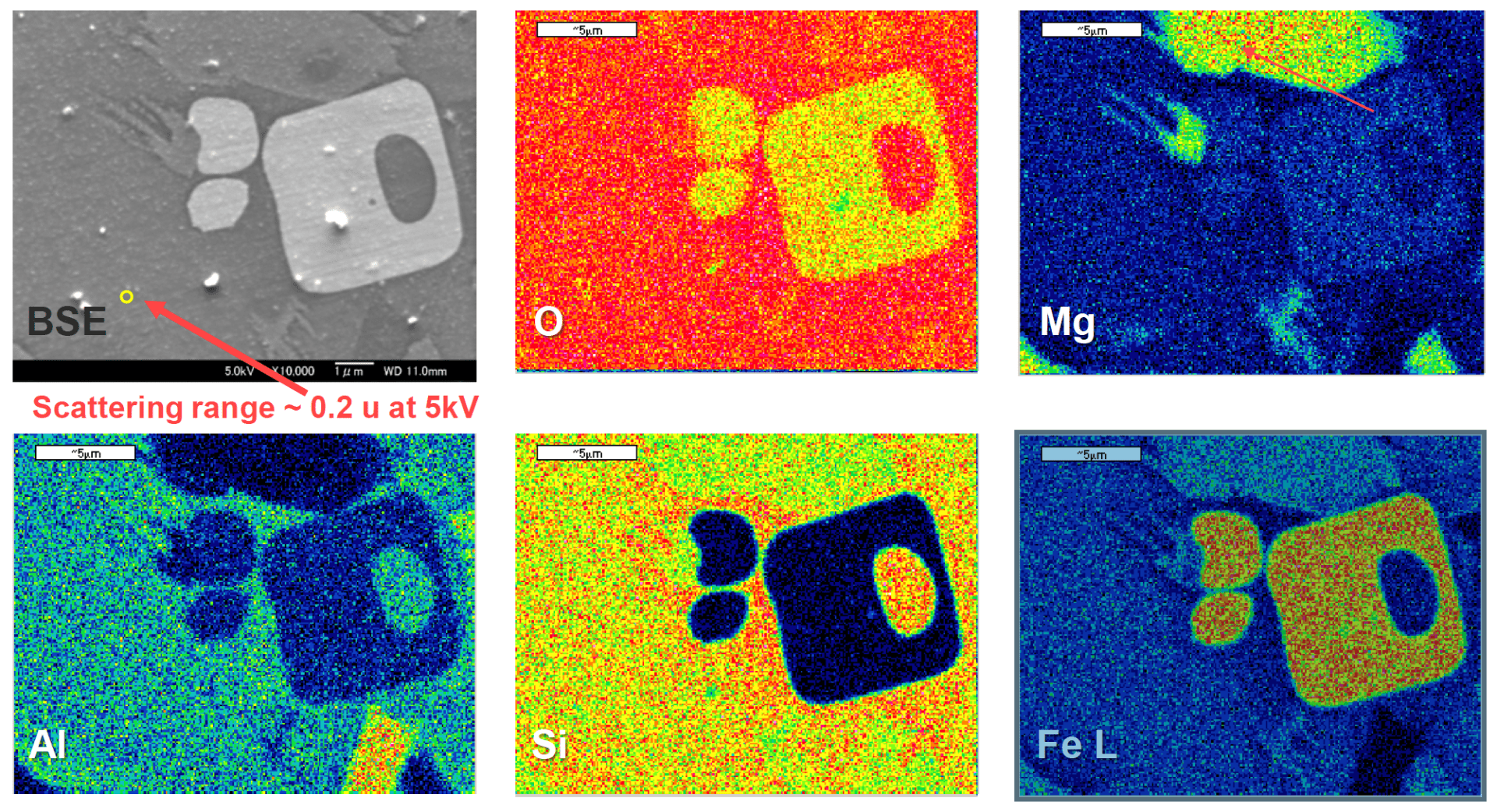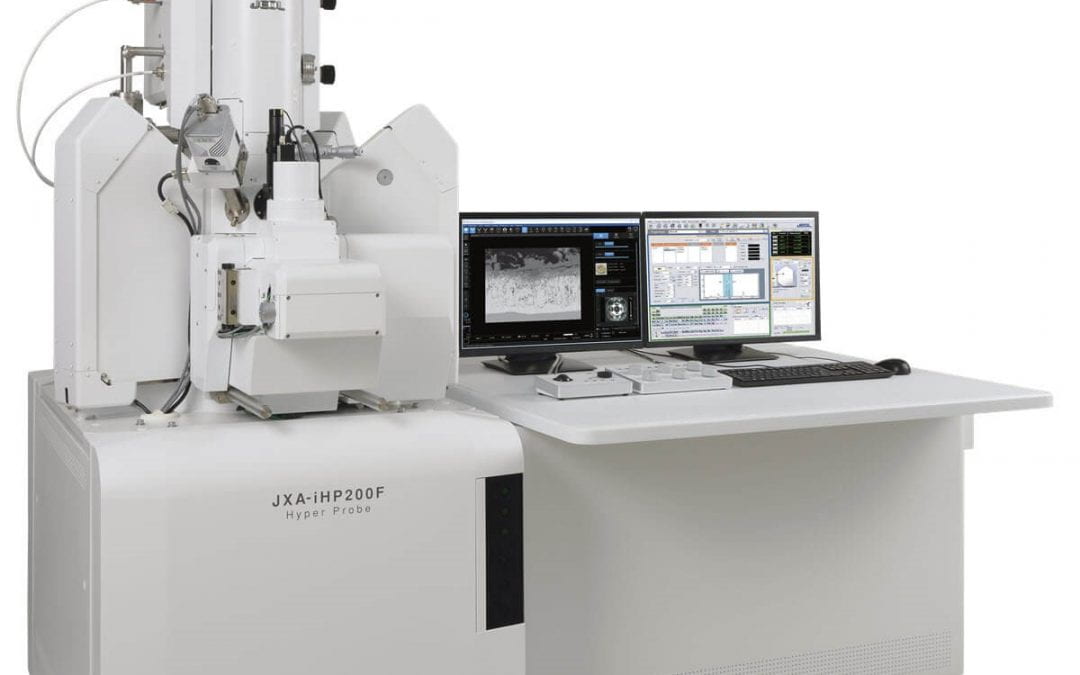
The Geological and Planetary Science Division’s Analytical Facility at the California Institute of Technology (Caltech) has joined the RAIN network, bringing an electron microprobe into the network for the first time. The facility currently includes a JEOL JXA-8200 hyperprobe, a conventional W-filament source instrument, and has just placed an order for a new JEOL JXA-iHP200F field-emission probe, to be delivered and commissioned in early 2022.
An electron microprobe (or electron probe microanalyzer, EPMA) is a specialized scanning electron microscope, optimized for accurate and precise non-destructive quantitative compositional analysis of solid materials at the micro-scale (or, in some cases, the nano-scale). Earth and planetary scientists routinely use the EPMA to analyze terrestrial and extra-terrestrial materials including rocks and meteorites; much of the original development of the tool was driven by the analysis of Apollo samples returned from the Moon. Materials scientists working with alloys, glasses, and solid solutions use the EPMA as well to verify that their materials and microdevice components have the desired compositions.
In addition to electron imaging capability similar to an SEM, the EPMA has a reflected light microscope to check focus and surface quality. One normally analyzes flat, polished solid materials in thin or thick section; multilayered thin films can be analyzed as well. The electron probe is equipped with five wavelength-dispersive X-ray spectrometers (WDS), which use diffracting crystals to separate the characteristic X-rays emitted by a sample before counting them. This gives the EPMA much finer spectral resolution than the energy-dispersive X-ray spectrometers (EDS) often installed on SEMs, and the ability to separate closely-spaced interfering X-ray lines. In turn, in combination with careful analysis of standards and matrix correction software, WDS allows quantification of all major elements heavier than N and minor elements down in some cases to ~100 ug/g, with typically 1% relative precision and accuracy. Because each WDS spectrometer only counts one wavelength at a time, one usually only analyzes a short list of elements. By comparison, EDS analysis on the SEM achieves only about 5% relative precision and accuracy and generally cannot detect minor elements below ~1000 ug/g, but simultaneously measures all the elements. Hence, when accurate and precise determination of a known list of elements is desired, the EPMA is the instrument of choice. When quicker qualitative assessment of the elements present is desired, the SEM is the tool of choice.
EPMA analysis gives students an opportunity to learn and think about a number of important issues in microanalysis and in the science and statistics of measurement more broadly: choice of standards, background subtraction, counting statistics, reproducibility, detection limits, internal and external precision, and more. For a student researcher with a solid sample in need of quantitative micro-scale analysis, or for a class studying the chemistry of minerals or the statistics of measurement and uncertainty, a remote session on the EPMA will be an unforgettable learning experience.
For more information, contact Instrument Operator Ma Chi, chima@caltech.edu or Principal Investigator Paul Asimow, asimow@caltech.edu.



